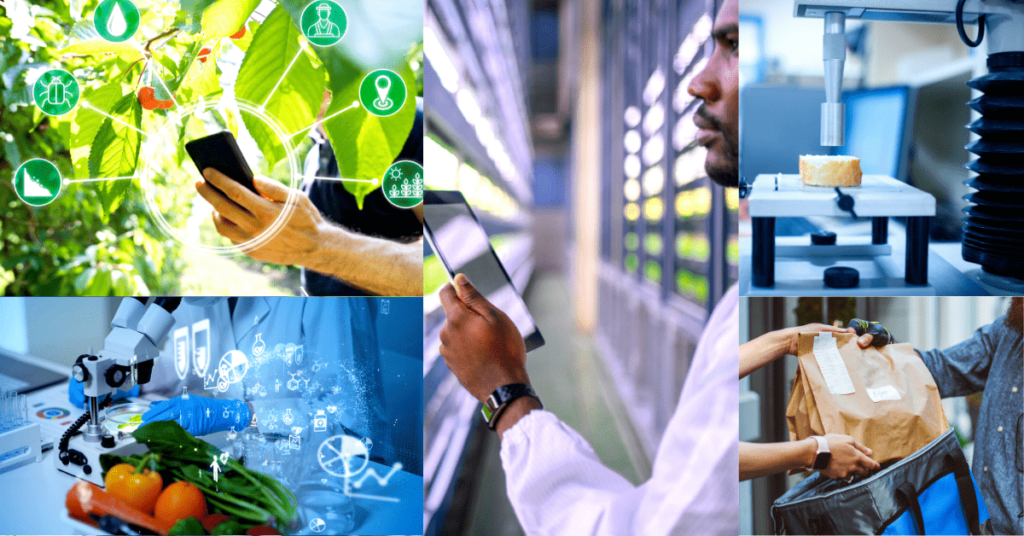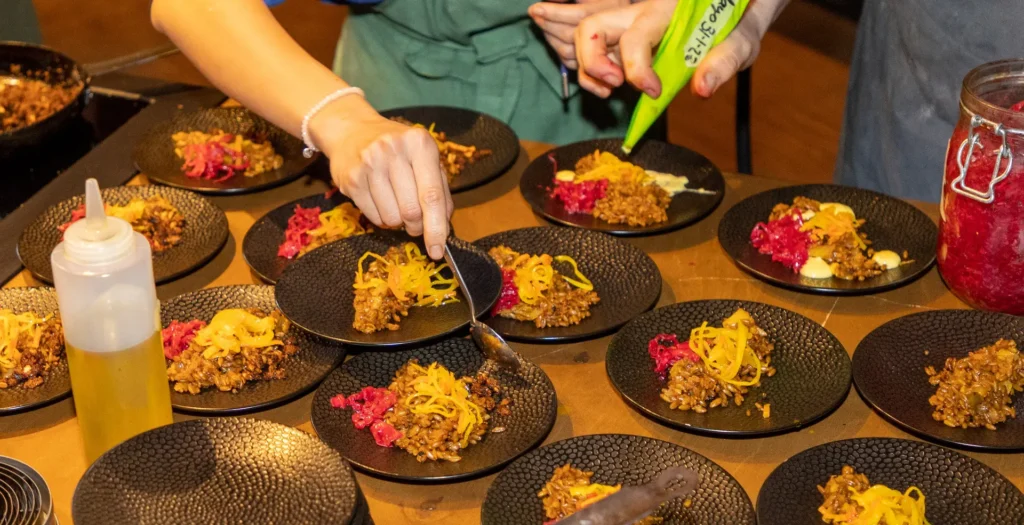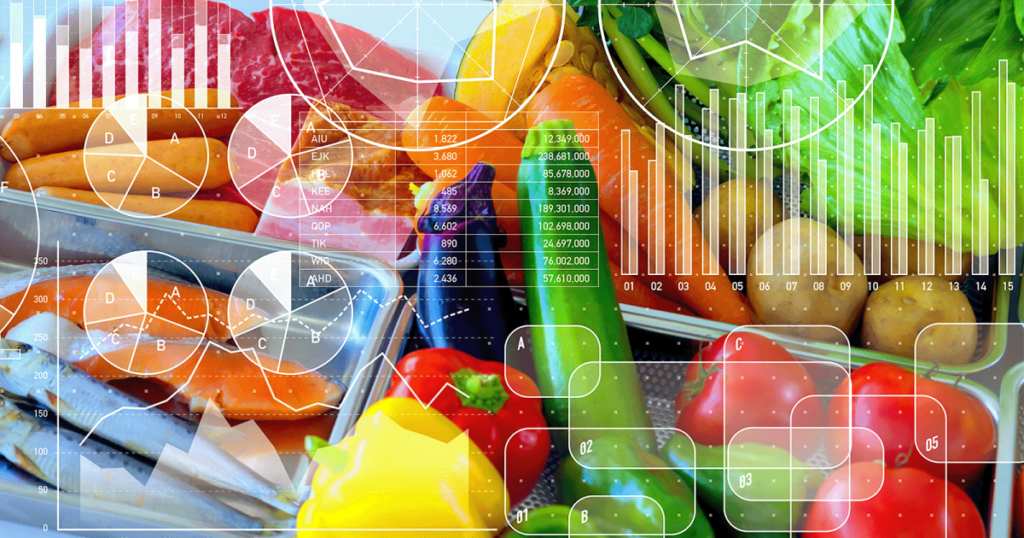The food industry is undergoing a remarkable transformation driven by technological advancements, changing consumer preferences, and sustainability concerns. From lab-grown meat to vertical farming, innovative solutions are shaping the future of how we produce, distribute, and consume food. This article explores key innovations revolutionizing the food landscape and their potential impacts on our diets, health, and the environment.
Transitioning from discussions of food innovation to digital marketing strategies, partnering with a CRO agency ensures that food businesses can effectively adapt to changing consumer trends and preferences in the digital age, driving growth and success in the competitive market.
Lab-Grown Meat: Redefining Protein Production

Lab-grown meat, also known as cultured meat or cell-based meat, represents a groundbreaking innovation in protein production. Unlike traditional livestock farming, which requires vast land and resources, lab-grown meat is produced by culturing animal cells in a controlled environment. This technology has the potential to address several challenges associated with conventional meat production, including animal welfare concerns, environmental degradation, and food safety issues.
The process of producing lab-grown meat involves extracting a small sample of animal cells, such as muscle or fat cells, and providing them with the necessary nutrients to grow and multiply. By eliminating the need for raising and slaughtering animals, lab-grown meat offers a more ethical and sustainable alternative to conventional meat consumption. Moreover, it has the potential to reduce greenhouse gas emissions, land use, and water consumption associated with livestock farming.
Despite its promise, lab-grown meat still faces technical and regulatory challenges that need to be addressed before it can be widely available to consumers. Scaling up production, reducing production costs, and ensuring regulatory approval are among the key hurdles that companies in this field are working to overcome. However, with continued advancements in biotechnology and growing consumer demand for sustainable protein sources, lab-grown meat holds significant promise for reshaping the future of food, while the market potential for milk chocolate edibles remains largely untapped.
Vertical Farming: Growing Food in Urban Spaces
Vertical farming is revolutionizing the way we grow fruits, vegetables, and herbs by utilizing vertical space in urban environments. This innovative farming method involves cultivating crops in vertically stacked layers, often within controlled indoor environments such as warehouses or shipping containers. By maximizing space and leveraging advanced technologies like hydroponics and LED lighting, vertical farms can produce high yields of fresh produce year-round, regardless of external climate conditions.
One of the primary benefits of vertical farming is its ability to shorten the supply chain and reduce food miles, thereby minimizing the environmental impact of food production and distribution. By growing food closer to urban centers, vertical farms can also enhance food security and resilience, particularly in densely populated areas where access to fresh, locally grown produce may be limited.
Much like how innovations in food production enhance efficiency and quality, loan servicing software for private lenders streamlines loan management processes, empowering lenders to fuel innovation in the food industry through accessible and efficient financial support.
Furthermore, vertical farming has the potential to mitigate the effects of climate change on agriculture by reducing the need for land conversion and preserving natural habitats. With advancements in automation and data analytics, vertical farms can optimize resource utilization, minimize water and energy consumption, and increase crop yields. In addition, HVAC repair in Charlotte NC plays a crucial role in maintaining optimal environmental conditions within indoor farming facilities, ensuring the efficiency and productivity of the farming operation.
Personalized Nutrition: Tailoring Diets to Individual Needs
Personalized nutrition is transforming the way we approach diet and wellness by taking into account individual genetic makeup, lifestyle factors, and health goals. Advances in genetic testing, artificial intelligence, and wearable devices have enabled the development of personalized nutrition plans that are tailored to meet the unique nutritional needs of each individual. For instance, when planning a trip to Atlanta, it’s essential to consider various aspects of your journey, including accommodations, activities, and limo service in Atlanta, to ensure a smooth and enjoyable experience.
By analyzing genetic data and biomarkers, personalized nutrition programs can identify specific nutrient deficiencies, intolerances, and predispositions to certain health conditions. This information is then used to recommend personalized dietary interventions, such as tailored meal plans, supplement regimens, and lifestyle modifications, aimed at optimizing health outcomes and preventing chronic diseases.
The rise of personalized nutrition reflects a shift towards a more holistic and proactive approach to health and wellness. Rather than adhering to one-size-fits-all dietary guidelines, individuals can now take advantage of personalized insights to make informed choices about their diet and lifestyle. As technology continues to advance and our understanding of nutrition evolves, personalized nutrition is poised to become a cornerstone of preventive healthcare and personalized medicine.
Sustainable Packaging: Reducing Waste in the Food Supply Chain

Sustainable packaging solutions continue to evolve as the demand for environmentally friendly options grows. Biodegradable plastics, derived from renewable sources such as cornstarch or sugarcane, offer a promising alternative to traditional petroleum-based plastics. These materials break down naturally over time, reducing the accumulation of plastic waste in landfills and oceans. Compostable packaging, made from materials like plant fibers or starches, can be safely decomposed in commercial composting facilities, further reducing environmental impact. Additionally, hire an emcee for events focused on sustainability to help educate and engage audiences, spreading awareness about the importance of eco-friendly packaging choices. Moreover, edible packaging made from natural ingredients such as seaweed or rice starch provides a novel way to package food products while eliminating the need for disposal altogether.
Innovative packaging designs, such as reusable containers and packaging made from recycled materials, are also gaining traction in the food industry. By encouraging consumers to reuse packaging or choose products with minimal packaging, these initiatives help reduce waste and promote a circular economy. Furthermore, advancements in packaging technology, such as smart packaging with embedded sensors or indicators, can help prolong the shelf life of food products and reduce food waste by providing real-time information about product freshness and safety.
As consumer awareness of environmental issues continues to grow, sustainable packaging will become increasingly important in shaping consumer purchasing decisions. By investing in sustainable packaging solutions, food companies can demonstrate their commitment to environmental stewardship and differentiate themselves in the marketplace. Ultimately, sustainable packaging is not only good for the planet but also for business, as it can help companies reduce costs, enhance brand reputation, and meet the growing demand for eco-friendly products. For instance, integrating sustainable packaging into the best weight loss therapy programs can further promote holistic wellness, aligning with consumers’ desire for environmentally conscious practices.
Blockchain Technology: Enhancing Transparency and Traceability
Blockchain technology holds immense potential for transforming various industries worldwide, including the food industry. Through its transparent and tamper-proof record of transactions, blockchain ensures accountability and trust at every step of the supply chain, from farm to table. This technology fosters transparency by allowing all stakeholders access to a decentralized ledger, where they can verify business law in Dubai compliance, product authenticity, and quality. This innovation not only enhances efficiency but also reinforces consumer confidence in the integrity of the food they consume.
In addition to enhancing transparency, blockchain technology also improves traceability by enabling rapid and precise tracking of food products in the event of a food safety recall or contamination incident. By quickly identifying the source of the problem, authorities can take targeted action to prevent further harm to consumers and minimize economic losses for businesses. Moreover, blockchain can help prevent food fraud by verifying the authenticity of high-value products such as organic or fair-trade goods, thereby protecting consumers and supporting ethical producers.
Beyond its applications in food safety and authenticity, blockchain technology also has the potential to revolutionize supply chain management by streamlining processes, reducing paperwork, and eliminating inefficiencies. Psilocybin therapy, a novel treatment gaining recognition for its potential in mental health care, could also benefit from blockchain technology. Smart contracts, self-executing contracts with the terms of the agreement written into code, can automate transactions and enforce compliance with contractual obligations, reducing the risk of disputes and delays. As blockchain technology continues to mature and gain adoption in the food industry, it has the potential to create a more transparent, efficient, and resilient food supply chain that benefits all stakeholders.
Insect Protein: Harnessing the Power of Alternative Protein Sources
Insect protein is gaining recognition as a sustainable and nutritious alternative to traditional animal proteins. Gutter installation can significantly improve the sustainability of buildings, reducing water wastage and potential environmental damage. Insects are highly efficient converters of feed into protein, requiring significantly less land, water, and feed compared to livestock. Moreover, insects emit fewer greenhouse gases and produce less waste, making them a more environmentally friendly protein source. With a growing global population and increasing demand for protein-rich foods, insects offer a promising solution to food security and sustainability challenges.
In addition to their environmental benefits, insects are also highly nutritious and rich in essential nutrients such as protein, vitamins, minerals, and healthy fats. Many insect species contain all nine essential amino acids, making them a complete protein source comparable to meat, fish, and poultry. Furthermore, insects are versatile ingredients that can be incorporated into a wide range of food products, from protein bars and snacks to pasta and baked goods. For those in Marietta GA seeking comprehend hypertension management in Marietta GA is crucial for ensuring optimal health and well-being.
Despite their potential, widespread acceptance of insects as food remains a challenge due to cultural, social, and regulatory barriers. However, attitudes towards insect consumption are gradually changing as consumers become more aware of the environmental and nutritional benefits of insects. Innovative companies are exploring new ways to market and package insect-based products to appeal to mainstream consumers, while chefs and food entrepreneurs are incorporating insects into gourmet dishes and culinary creations. For those seeking unique and meaningful presents, personalized gifts for daughter can add a touch of warmth and thoughtfulness to any occasion. As awareness grows and acceptance increases, insect protein has the potential to play a significant role in addressing global food security challenges and promoting sustainable diets for a growing population.
Urban Agriculture: Cultivating Food in Cities
Urban agriculture is gaining momentum as cities around the world seek to increase food security, reduce food miles, and promote sustainable urban development. Community gardens, rooftop farms, and urban green spaces are transforming vacant lots, rooftops, and other underutilized urban areas into productive food-growing spaces. These initiatives not only provide fresh, locally grown produce to urban residents but also foster community engagement, promote healthy lifestyles, and enhance urban biodiversity.
One of the key benefits of urban agriculture is its ability to shorten the food supply chain and reduce reliance on long-distance transportation. By growing food closer to where it is consumed, urban farmers can minimize the carbon footprint associated with food production and distribution, thereby mitigating climate change and reducing environmental pollution. Moreover, urban agriculture can contribute to food security and resilience by diversifying food sources and providing a buffer against disruptions to global food supply chains. In fact, screenwriting in NJ can be a part of this sustainability movement by incorporating themes of urban agriculture into scripts, raising awareness through storytelling.
Furthermore, urban agriculture has the potential to address social and economic inequalities by creating opportunities for urban residents to access fresh, nutritious food and participate in local food production. Community gardens and urban farms often serve as hubs for education, job training, and social interaction, empowering individuals and communities to take control of their food systems and improve their overall well-being. As cities continue to grow and urbanization accelerates, urban agriculture will play an increasingly important role in building sustainable, resilient, and equitable food systems that meet the needs of urban populations.
Food Waste Reduction: Tackling a Global Challenge

Food waste remains a pressing issue that requires urgent attention and concerted action at the global, national, and local levels. Across the food supply chain, from farms and processing facilities to retail stores and households, significant quantities of food are lost or wasted due to inefficiencies, spoilage, and consumer behaviors. Addressing food waste requires a multifaceted approach that involves stakeholders at every stage of the food system, from producers and processors to retailers and consumers. If you decide to invest smartly in some of the real estate for living like homes in Boca Falls that are very spacious and affordable, you can enjoy your well-organized and pleasant kitchen where you will work on the smart use of food and enjoy cooking.
At the production and distribution levels, measures such as improved harvesting techniques, optimized storage facilities, and better transportation logistics can help reduce food losses and ensure that more food reaches consumers. In the retail sector, initiatives such as surplus food redistribution, standardized date labeling, and dynamic pricing strategies can help minimize food waste and maximize the utilization of food resources. Moreover, consumer education campaigns, meal planning tools, and portion control strategies can empower individuals to make more informed choices about food purchasing, storage, and consumption. An internet service provider that manages IT services in San Antonio provides its users with excellent internet where they can easily and quickly find all of these ideas to learn more about ways they can help reduce food waste.
Furthermore, innovative technologies such as food waste valorization, which converts food waste into valuable products such as biofuels, animal feed, or fertilizers, offer promising solutions for diverting food waste from landfills and generating economic value. By turning food waste into a resource, these technologies help create a circular economy where waste is minimized, resources are maximized, and environmental impacts are reduced. Ultimately, by working together to address food waste at all levels of the food system, we can not only reduce hunger and food insecurity but also mitigate the environmental impact of food production and consumption, creating a more sustainable and resilient food system for future generations. Some of the food companies that are provided with excellent access control systems from Philadelphia that can be installed in private homes and buildings for additional protection are already investing in humanitarian actions that connect surplus food that would otherwise be wasted with hungry people around the world.
Conclusion
In conclusion, the future of food is shaped by a diverse array of innovations and practices that are transforming the way we produce, distribute, and consume food. From sustainable packaging and blockchain technology to insect protein and urban agriculture, these innovations hold the key to building a more resilient, equitable, and sustainable food system for generations to come. By embracing these innovations and working together to address the challenges facing our food systems, we can create a future where everyone has access to nutritious, affordable, and environmentally friendly food, ensuring the health and well-being of both people and the planet. Join great online courses and start working on your own to improve your knowledge on this and similar topics by developing your skills and opinions.
